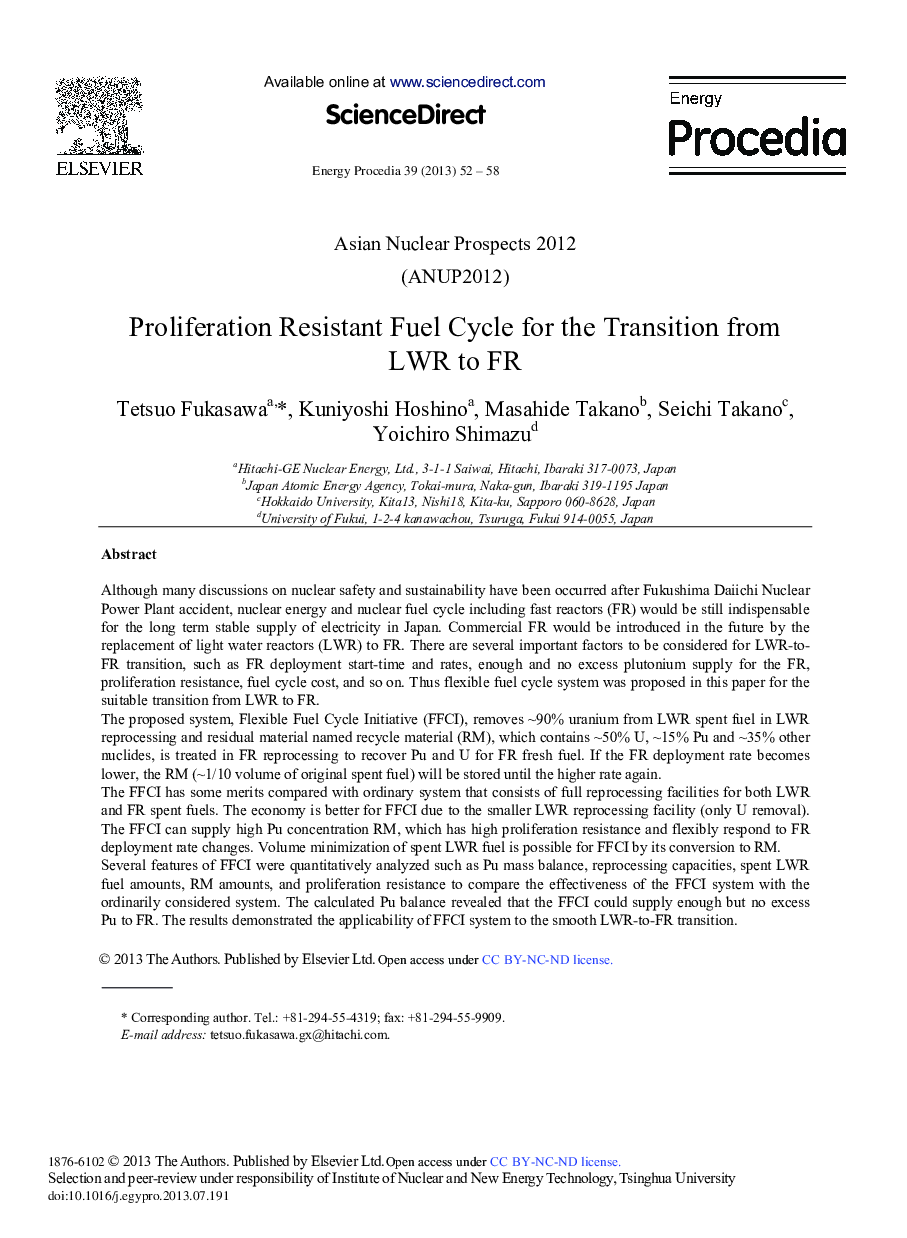| کد مقاله | کد نشریه | سال انتشار | مقاله انگلیسی | نسخه تمام متن |
|---|---|---|---|---|
| 1512370 | 1511196 | 2013 | 7 صفحه PDF | دانلود رایگان |

Although many discussions on nuclear safety and sustainability have been occurred after Fukushima Daiichi Nuclear Power Plant accident, nuclear energy and nuclear fuel cycle including fast reactors (FR) would be still indispensable for the long term stable supply of electricity in Japan. Commercial FR would be introduced in the future by the replacement of light water reactors (LWR) to FR. There are several important factors to be considered for LWR-to- FR transition, such as FR deployment start-time and rates, enough and no excess plutonium supply for the FR, proliferation resistance, fuel cycle cost, and so on. Thus flexible fuel cycle system was proposed in this paper for the suitable transition from LWR to FR.The proposed system, Flexible Fuel Cycle Initiative (FFCI), removes ∼90% uranium from LWR spent fuel in LWR reprocessing and residual material named recycle material (RM), which contains ∼50% U, ∼15% Pu and ∼35% other nuclides, is treated in FR reprocessing to recover Pu and U for FR fresh fuel. If the FR deployment rate becomes lower, the RM (∼1/10 volume of original spent fuel) will be stored until the higher rate again.The FFCI has some merits compared with ordinary system that consists of full reprocessing facilities for both LWR and FR spent fuels. The economy is better for FFCI due to the smaller LWR reprocessing facility (only U removal). The FFCI can supply high Pu concentration RM, which has high proliferation resistance and flexibly respond to FR deployment rate changes. Volume minimization of spent LWR fuel is possible for FFCI by its conversion to RM. Several features of FFCI were quantitatively analyzed such as Pu mass balance, reprocessing capacities, spent LWR fuel amounts, RM amounts, and proliferation resistance to compare the effectiveness of the FFCI system with the ordinarily considered system. The calculated Pu balance revealed that the FFCI could supply enough but no excess Pu to FR. The results demonstrated the applicability of FFCI system to the smooth LWR-to-FR transition.
Journal: Energy Procedia - Volume 39, 2013, Pages 52-58